Normal phenotypes
Active team: PROMINENTChallenge: Understand how cells and tissues maintain “normal” phenotypes whilst harbouring oncogenic mutations and how they transition to become a tumour.
We set this challenge in 2020, which team PROMINENT is currently tackling. We're not accepting new applications.
Please note that the description below reflects the challenge as set by our Scientific Committee in 2020; we understand that there may have been developments in the field between then and now.
Currently viewing section: Context
Context
Recent studies looking at normal tissues from different anatomical sites have revealed that cells frequently harbour somatic mutations. These cells and tissues appear to be phenotypically normal, but surprisingly some of them carry known cancer mutations (e.g., mutant RAS or p53 loss). The selection and clonal expansion of cells containing driver mutations seems to be a feature of normal ageing. Identification of these cells has opened the opportunity to understand how they and their resident tissues retain a normal phenotype. In addition, their discovery raises questions about what changes are needed to promote tumour development following these initial mutations. This challenge focuses on how cell physiology is changed by the presence of one or more cancer mutations and asks what types of genetic or environmental changes allow these cells to progress to early stage tumours.
Barriers and opportunities
To date, work in model systems has suggested that acquisition of a relatively limited number of mutations in key cancer driver genes is sufficient to transform a normal cell into a cancer cell. However, recent observations confirm that the situation is more complex in tissues and raises interesting and important questions about how tumour progression is limited or suppressed. The challenge is to understand the behaviour and selection of cells harbouring oncogenic mutations, when they remain normal and if, where, and how they undergo tumorigenic progression. This challenge should focus beyond cell intrinsic factors alone and should explore the role of the surrounding cells or stroma, including the extracellular matrix, and the role of the host in restraining progression. Considerations should include the influence of the tissue and organ, and/or any systemic systems, such as the immune system, metabolite availability or infection. Teams should identify the mechanisms that allow these cells to remain normal and identify the molecular events that are necessary to allow these cells to progress to malignancy.
Other areas that could also be addressed include but are not limited to:
- Do any “normal” somatic cells contain combinations of oncogenic events known to drive tumorigenesis (e.g., Kras mutations plus loss of p53) or does each cell harbour only one of these events?
- How many different types of mechanisms allow cells to progress from carrying one oncogenic mutation to tumour formation?
- How do processes such as inflammation, wound healing, or tissue regeneration impact the behaviour of these cells? What are the critical mechanisms underlying such interactions?
- How do these processes relate to the action of tumour promoting agents?
- What is the impact of ageing on the mechanisms that restrain these cells?
- What is the role of genomic stability and lack of chromosomal rearrangements and copy number changes in maintaining a normal phenotype?
- Are there oncogenic alterations that never occur in normal cells (e.g., TERT promoter alterations)?
- Does the order of acquisition of mutations make a difference to the outcome?
- What impact will these cells (especially considering their increased abundance with age) have on cfDNA approaches for early diagnosis?
- Is there a link between more or larger clones of such cells and increased cancer risk?
Vision and Impact
This challenge seeks to expand our understanding of the cell intrinsic and extrinsic mechanisms that exist to prevent malignant progression and to identify the steps that allow early tumour development. The challenge asks that teams look beyond the simple accumulation of mutations and understand in molecular detail how a normal cell harbouring a cancer mutation is restrained from oncogenic progression and then identify the critical steps for progression at the earliest steps of tumour development. Addressing this challenge will require a multidisciplinary team, which could bring together expertise in genetics and evolutionary biology, with functional analyses of both individual cell behaviour and cell-cell, cell-host interactions, human tissue developmental biology, tissue and cell imaging, mechanistic cell biology, mouse model development, and systems biology.
Knowledge generated in this challenge could help identify key and potentially targetable steps in the development of cancer.
Plain language summary: Why normal phenotypes?
Cancer develops due to mistakes in our DNA – called mutations – that cause our cells to multiply uncontrollably. But the presence of these mutations doesn’t guarantee that cancer will occur. Surprisingly, some cells continue to function normally even with many supposedly cancer-causing mutations.
Why some cells but not others can resist becoming cancerous remains a mystery. Researchers suspect that factors such as ageing, the immune system and a cell’s local neighbourhood could play a part.
This Cancer Grand Challenge asks scientists to answer the deep biological questions around what makes our cells ‘normal’, to discover exactly what tips them into becoming a cancer cell. This knowledge would help us design new therapies and diagnostic tools that target this critical moment of transition to catch cancer early or stop it before it ever starts.
